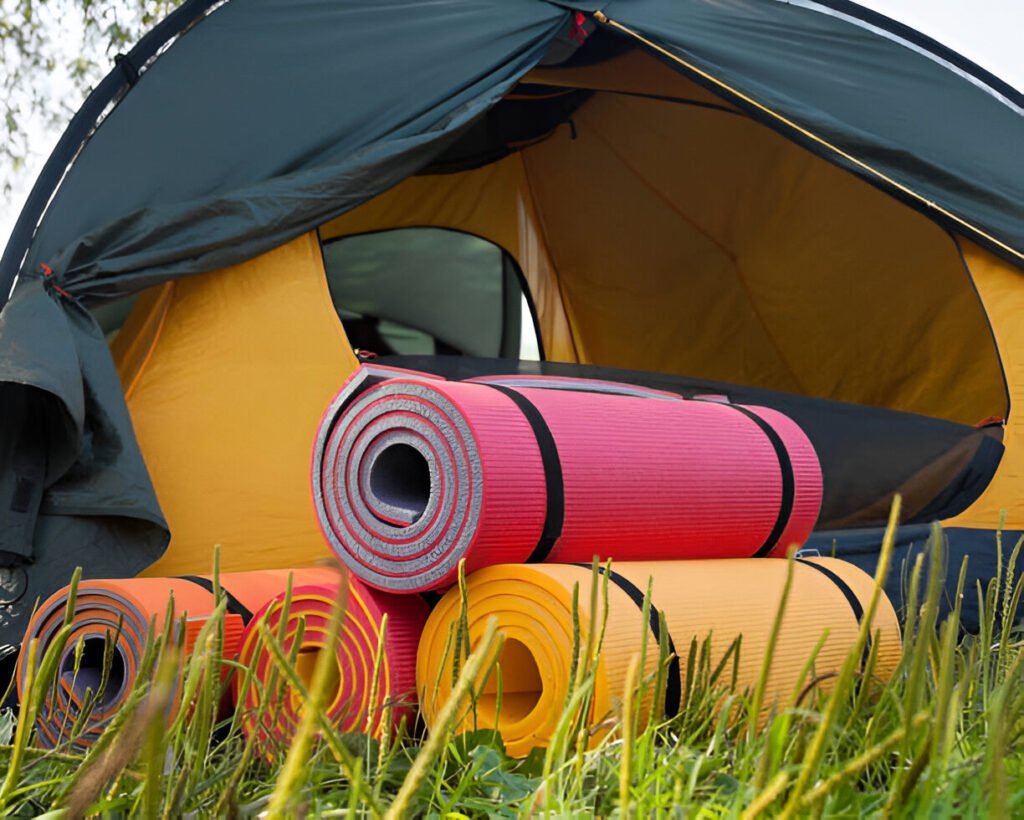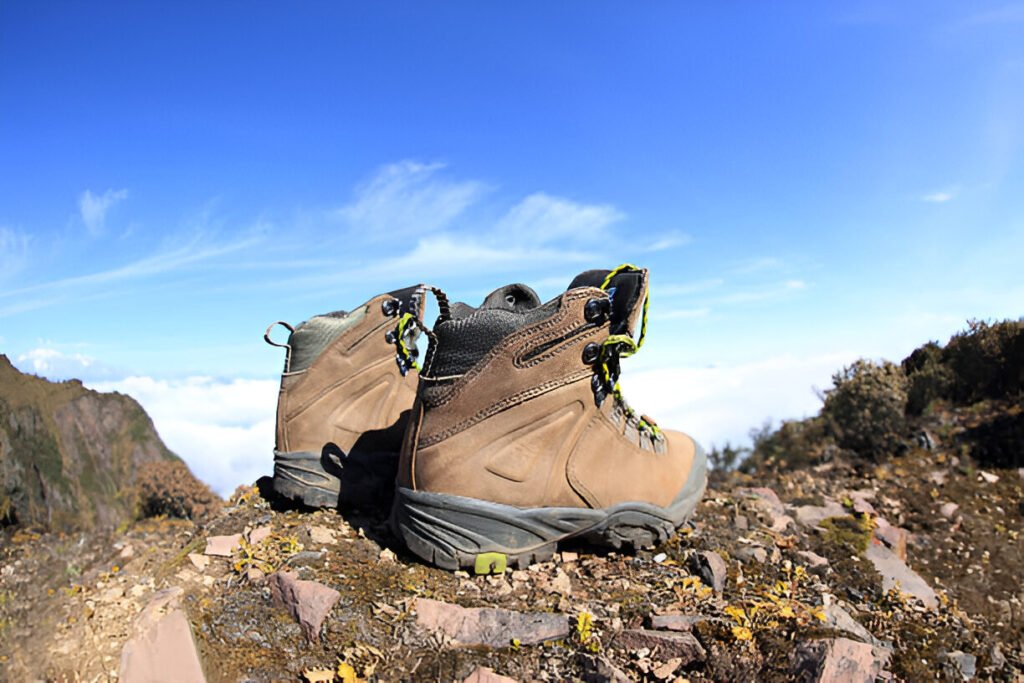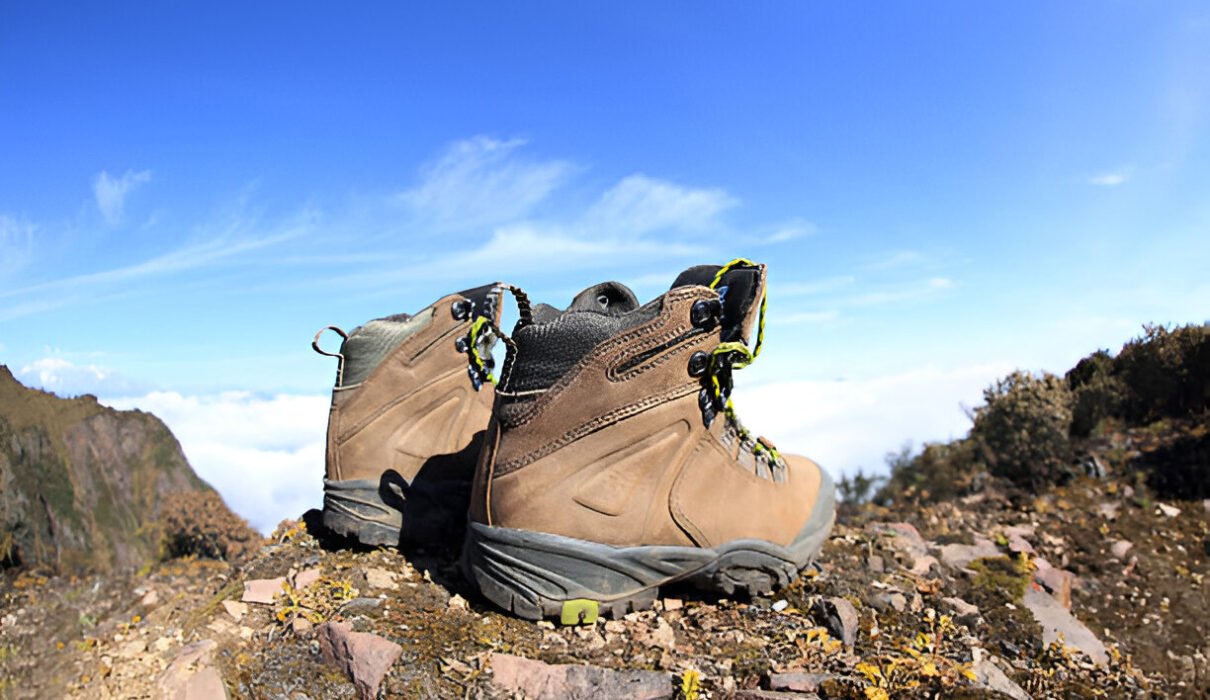Kilimanjaro Climbing Gear Recommendation: Introduction
Kilimanjaro Climbing Gear Recommendation. Mount Kilimanjaro, Africa’s tallest peak, is a bucket-list climb for adventurers worldwide. Standing at 5,895 meters, this iconic mountain offers both a physically challenging and spiritually rewarding experience. However, reaching the summit requires more than just determination; it demands careful preparation, particularly in terms of gear. In this guide, we provide comprehensive Kilimanjaro climbing gear recommendations to ensure your journey is safe, comfortable, and successful.

Understanding Kilimanjaro’s Climate Zones
Kilimanjaro’s ascent takes you through five distinct climate zones, each with its own weather patterns and environmental conditions. Understanding these zones is crucial for selecting the right gear.
- Tropical Rainforest: The lower slopes are lush and humid, with heavy rainfall at times. Waterproof clothing is essential.
- Heather and Moorland: Temperatures drop as you ascend, and the terrain becomes more rugged. Insulation becomes key.
- Alpine Desert: Harsh winds and strong sunlight are typical here. Layering for protection against the elements is crucial.
- Arctic Summit: Freezing temperatures and thin air demand the warmest gear. This is where your preparation will be truly tested.
Kilimanjaro Climbing Gear Recommendation : Clothing Essentials for Kilimanjaro
Selecting the right clothing is a critical aspect of your preparation. The strategy revolves around layering to adapt to varying conditions.
Kilimanjaro Climbing Gear Recommendation : Base Layers
Start with moisture-wicking base layers to keep sweat off your skin, reducing the risk of hypothermia. Merino wool or synthetic materials are ideal.
Kilimanjaro Climbing Gear Recommendation : Insulating Layers
Fleece jackets, down vests, or synthetic insulated jackets provide warmth during cold evenings and higher altitudes. Ensure your insulation is lightweight yet effective.
Kilimanjaro Climbing Gear Recommendation : Outer Layers
A quality waterproof and windproof jacket is your best defense against Kilimanjaro’s unpredictable weather. Opt for breathable materials to avoid overheating during intense climbs.
Headgear and Gloves
Thermal hats, balaclavas, and gloves are non-negotiable. You lose significant body heat through your head and extremities, so keep these areas well-protected.
Footwear for the Ascent
Your feet will carry you to the summit, so treat them well with the best footwear.
Trekking Boots
Sturdy, waterproof, and broken-in boots are essential. Look for high-ankle support to protect against twists and turns on the uneven terrain.
Gaiters
Gaiters protect your legs and boots from mud, snow, and debris, especially in the lower rainforest and upper summit zones.
Socks
Invest in moisture-wicking and thermal socks. Layering socks can help prevent blisters and keep your feet dry.

Backpacks and Daypacks
Carrying the right type of backpack ensures you can manage your gear efficiently and comfortably.
Main Backpack
A 60-70 liter backpack is typically sufficient for the entire climb. Ensure it has a rain cover and multiple compartments for easy organization.
Daypack Essentials
A smaller daypack (20-30 liters) should hold your daily essentials: water, snacks, extra layers, and navigational tools.
Kilimanjaro Climbing Gear Recommendation : Sleeping Gear
After long days of trekking, a good night’s sleep is essential to recuperate.
Sleeping Bags
Choose a sleeping bag rated for temperatures as low as -10°C to -20°C. Down bags are warm and compressible but need to stay dry.
Sleeping Pads
An insulated sleeping pad provides comfort and prevents heat loss from the ground.
Pillows
Inflatable or compressible pillows can enhance your sleeping comfort without adding much weight.
Kilimanjaro Climbing Gear Recommendation : Trekking Poles and Other Climbing Aids
Trekking Poles
These are invaluable for maintaining balance, reducing stress on your knees, and saving energy during steep climbs.
Crampons (When Necessary)
Though not always needed, crampons can provide extra traction in icy conditions, particularly near the summit.
Headlamps
Essential for early morning summit attempts, headlamps with long battery life and adjustable brightness are recommended.
Hydration Systems
Staying hydrated is crucial in preventing altitude sickness and maintaining energy levels.
Water Bottles vs. Hydration Bladders
Hydration bladders are convenient for drinking on the go but can freeze at higher altitudes. Water bottles with insulated covers are a reliable alternative.
Water Purification Methods
Portable water filters or purification tablets are necessary for treating water from streams or other natural sources.
Nutrition and Snacks
Proper nutrition keeps you fueled throughout the climb.
High-Energy Snacks
Pack nuts, dried fruits, energy bars, and chocolate for quick energy boosts during breaks.
Meal Planning for the Climb
Consider lightweight, high-calorie foods that are easy to prepare. Instant oatmeal, freeze-dried meals, and soups are popular choices.
First Aid and Emergency Supplies
Your first aid kit should cover common injuries and altitude-related symptoms.
Personal Medications
Ensure you carry all necessary personal medications, including those for altitude sickness prevention (e.g., Diamox).
First Aid Kit
Include bandages, antiseptics, painkillers, blister treatment, and altitude sickness medication.
Emergency Blanket
An emergency blanket is a lightweight, compact tool that can provide warmth in case of sudden temperature drops.
Navigational Tools (Not Necessary)
Reliable navigation tools are key to a safe ascent.
Maps and GPS Devices
Even if you’re with a guide, having a map and a GPS device offers extra security.
Compass
A basic compass can be a lifesaver if technology fails or in low-visibility conditions.
Gadgets and Electronics
Documenting your journey and staying powered up requires a bit of tech.
Camera Equipment
Capture the breathtaking scenery with a lightweight, durable camera or smartphone with a good camera.
Portable Chargers and Solar Panels
Given the length of the climb, portable chargers and solar panels can keep your devices powered up.
Toiletries and Personal Hygiene
Keeping clean and comfortable is a challenge on Kilimanjaro but can be managed with the right supplies.
Biodegradable Soaps and Wet Wipes
These are essential for personal hygiene, especially when shower facilities are unavailable.
Toilet Paper and Bags
Carry enough toilet paper and sealable bags to pack out your waste, as the mountain’s ecosystem is fragile.
Final Preparation Tips
Before you embark on your adventure, double-check your gear and preparation.
Packing Strategy
Pack your backpack thoughtfully, with heavier items at the bottom and frequently used items near the top.
Weight Distribution
Keep your pack’s weight under 15kg to avoid strain. Distribute the weight evenly to maintain balance during the trek.
Kilimanjaro Climbing Gear Recommendation : FAQs
1. What should be the weight of my backpack? Your backpack should weigh no more than 15kg to prevent excessive strain during the climb.
2. Are trekking poles necessary for Kilimanjaro? Yes, trekking poles are highly recommended as they help maintain balance and reduce joint stress.
3. How many layers of clothing do I need? You should have at least three layers: base, insulating, and outer layers, to adjust to varying temperatures.
4. What type of sleeping bag should I carry? Carry a sleeping bag rated for -10°C to -20°C, ideally down-filled for warmth and packability.
5. Can I rent gear on Kilimanjaro? Yes, many local companies offer gear rental, but it’s advisable to bring your own for comfort and quality assurance.
6. How can I stay hydrated during the climb? Use a combination of hydration bladders and water bottles. Don’t forget to purify water from natural sources.
Kilimanjaro Climbing Gear Recommendation : Conclusion
Climbing Mount Kilimanjaro is an extraordinary challenge that requires careful preparation. With the right gear, you can face the mountain’s unpredictable conditions confidently and increase your chances of reaching the summit. By following these Kilimanjaro climbing gear recommendations, you’ll be well-equipped to tackle one of the world’s most iconic peaks.
Book your spot now via eddytoursandsafari@gmail.com or via WhatsApp +255711906664

